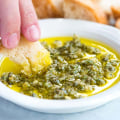If you're a fan of delicious Mediterranean cuisine, you won't want to miss out on the tantalizing flavors of Greek dishes such as Moussaka and Souvlaki. These traditional Greek dishes have been loved and enjoyed by locals for centuries, making them a must-try for any adventurous eater. In this article, we'll explore the tantalizing world of Greek dishes, from the spices used to the cooking techniques that make them so special. So, let's dive in and discover the delightful delights of Greek cuisine!Greek cuisine is a delicious blend of fresh ingredients, herbs, and spices.
From the iconic Moussaka to the more traditional Souvlaki, Greek dishes are some of the most beloved in the world. But what are these dishes, and where do they come from? Let's explore two of the most popular Greek dishes and how to make them at home. Moussaka is a classic Greek dish made with layers of sautéed eggplant or zucchini, ground beef or lamb, tomato sauce, and a creamy béchamel sauce. It is traditionally served as a main course, but can also be served as a side dish. The origins of moussaka are debated, with some believing it to have originated in ancient Greece while others trace it back to Ottoman Turkey.
No matter its origins, moussaka has become an iconic Greek dish. To make moussaka at home, start by preheating your oven to 375 degrees F. Next, slice your eggplant or zucchini into thin slices and sauté until golden brown. In a separate pan, sauté the ground beef or lamb until cooked through, then add the tomato sauce and season with salt and pepper to taste. Once the mixture is cooked through, layer it with the eggplant or zucchini in a baking dish.
Then make the béchamel sauce by melting butter in a small saucepan over medium-low heat. Add flour and whisk until a thick paste forms. Slowly add milk while whisking until the sauce thickens. Pour the béchamel sauce over the layered meat and vegetables and bake for 45 minutes.
Let cool before serving. Souvlaki is another classic Greek dish made with cubes of pork, chicken, or lamb that are marinated in olive oil and lemon juice and then grilled on skewers. The origins of souvlaki are also debated, but it is believed to have originated in ancient Greece as a way to preserve meat during long journeys. Today it is served as an appetizer or main course, often with tzatziki sauce. To make souvlaki at home, start by cutting your chosen meat into 1-inch cubes and marinate in olive oil, lemon juice, garlic, oregano, salt and pepper for at least one hour. Once marinated, thread the cubes onto skewers and grill for 8-10 minutes until cooked through.
Serve with tzatziki sauce or other accompaniments like pita bread or roasted vegetables. Greek dishes are beloved all over the world for their unique flavors and tantalizing aromas. From hearty moussaka to flavorful souvlaki, these dishes are sure to please even the pickiest of eaters. So try making these dishes at home today - you won't be disappointed!
Souvlaki
Souvlaki is one of the most beloved Greek dishes and has been enjoyed for centuries. It is made up of marinated meat, usually pork, chicken, beef, or lamb, as well as vegetables and pita bread.The meat and vegetables are then grilled or broiled to create a delicious meal. Souvlaki is often served with tzatziki sauce, a cucumber and yogurt-based sauce with a hint of garlic. Traditionally, it is cooked over charcoal and served on a skewer. Souvlaki has its origins in Ancient Greece, where it was enjoyed by citizens as a simple yet flavorful meal.
Over time, it has evolved into the popular dish that it is today. It can be found all across Greece and is also enjoyed in many parts of the world. In some regions of Greece, such as Thessaly and Macedonia, souvlaki is served with a special sauce called skordalia. This sauce is made from mashed potatoes and garlic and gives the dish an extra layer of flavor.
Souvlaki can be prepared in a variety of different ways depending on the region. In some places, it may be served simply with just meat and vegetables, while in others it may be served with tzatziki sauce or skordalia. No matter how it’s prepared, souvlaki is always sure to be a delicious meal.
Moussaka
Moussaka is a classic Greek dish that has been enjoyed for centuries. It's a hearty casserole made with layers of potatoes, eggplant, and ground beef or lamb.The dish is then topped with a tomato sauce and baked to perfection. This simple yet flavorful dish is a staple in many Greek households. The origin of moussaka can be traced back to the Ottoman Empire in the 17th century. It was initially made with vegetables such as eggplant, onions, and tomatoes, and then layered with ground meat.
Over time, the recipe has evolved to include potatoes and other variations, but the basics remain the same. The key ingredients in moussaka are potatoes, eggplant, ground beef or lamb, onion, and tomato sauce. First, the potatoes are sliced and boiled until tender. The eggplant is then cut into slices and lightly fried in oil.
The ground beef or lamb is sautéed in a pan with the onion until it is cooked through. The tomato sauce is then added and cooked for several minutes before being added to the casserole dish. Once all the ingredients have been added to the casserole dish, it is baked in the oven for approximately 30 minutes or until golden brown. Some regions may top moussaka with a béchamel sauce to give it an even richer flavor.
Moussaka is a delicious and versatile dish that can be enjoyed as a side or as the main course. It's sure to be a hit no matter what kind of meal you're looking for!In conclusion, Greek dishes such as Moussaka and Souvlaki are some of the most flavorful dishes in the world. With their long history and variety of ingredients and flavors, these dishes are sure to please any palate. With a little bit of practice, anyone can make these delicious dishes at home.


